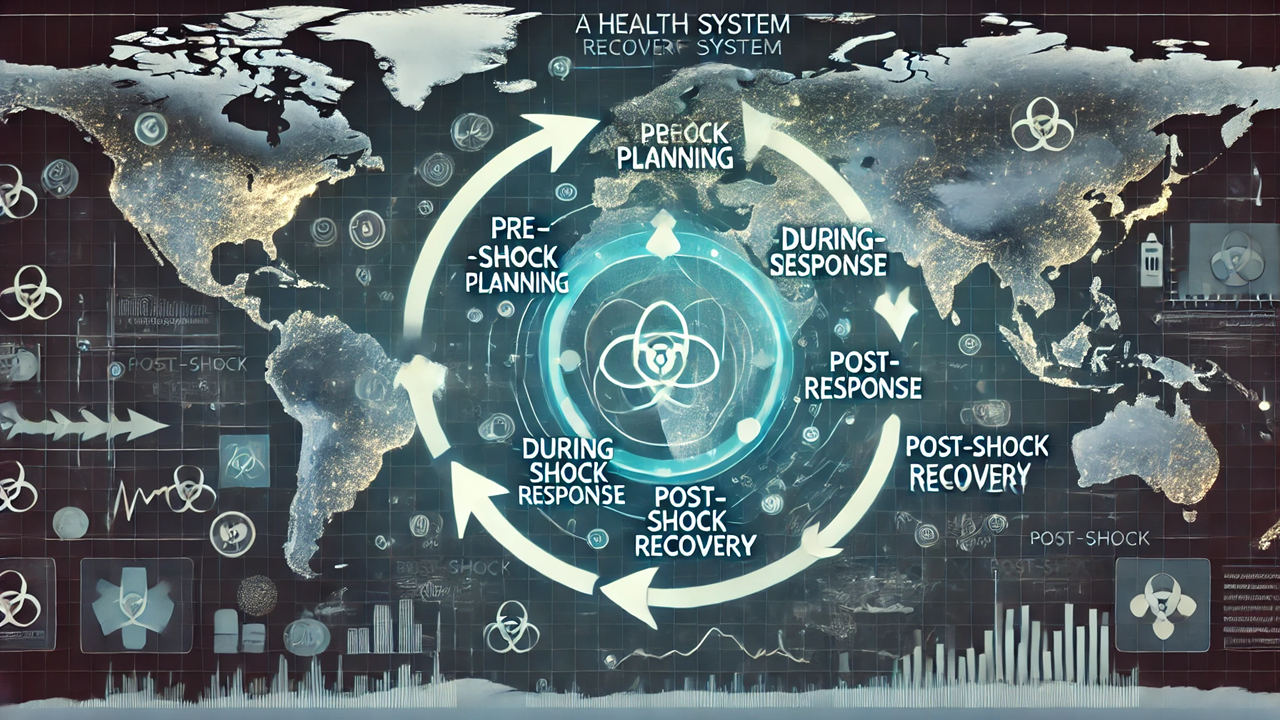Building Resilient Health Systems: WHO's Blueprint for Recovery After Disruptive Events
This article explores the WHO's guidance on health system recovery after disruptive events. The guidance advocates for an integrated, systemwide approach to recovery, emphasizing resilience and sustainability. It outlines a three-phase process: pre-shock planning, developing a shock-specific plan during the crisis, and transitioning to long-term health sector development post-crisis. Key principles include equity, systems thinking, and integration. The article underscores the importance of using crises as opportunities to build back better, more resilient health systems.

The World Health Organization (WHO) has released a comprehensive guide to help countries navigate the complexities of health system recovery in the aftermath of disruptive events, such as pandemics, natural disasters, or conflicts. This guidance, titled "Planning for Health System Recovery: Guidance for Application in Countries," underscores the necessity of not merely restoring health systems to their former states but leveraging crises as opportunities to build back better and more resilient systems.
The Need for Integrated Health System Recovery
As global health systems face an increasing number of shocks—from natural disasters to pandemics like COVID-19—the importance of a robust recovery strategy has never been more evident. The WHO's guidance document is a critical resource that fills a significant gap in the technical knowledge needed for integrated recovery planning. It emphasizes the need for systemwide approaches, moving beyond fragmented efforts that focus on isolated health programs.
The guide is particularly timely as countries worldwide grapple with the ongoing effects of the COVID-19 pandemic, which has exposed deep vulnerabilities in even the most advanced health systems. The WHO advocates for a shift in how recovery is approached, urging countries to adopt strategies that ensure resilience and sustainability while aligning with broader health and development goals.
A Three-Phase Approach to Recovery
The WHO guidance outlines a structured, three-phase approach to health system recovery:
Pre-shock Planning: This phase involves pre-positioning and mainstreaming recovery planning requirements into existing health sector policies. The goal is to ensure that when a shock occurs, countries are not starting from scratch but have a clear, actionable plan already in place. This phase includes identifying health system recovery as a policy priority, establishing responsible structures, and engaging key stakeholders in collaborative efforts.
During Shock Events: Amid a crisis, the focus shifts to developing a shock-specific recovery plan. This involves conducting rapid situational analyses to assess the current state of the health system and the impact of the disruption. The plan should prioritize activities that address the most critical gaps while ensuring that the recovery process does not disrupt essential health services.
Post-shock Context: Once the immediate crisis has passed, the recovery plan must be sustained and transitioned into longer-term health sector development. This phase emphasizes the importance of integrating recovery efforts with routine health sector planning, ensuring that lessons learned during the crisis are applied to build a more resilient system.
Guiding Principles for Effective Recovery
The WHO guidance is built on several key principles that are crucial for effective health system recovery
Equity: Recovery efforts must prioritize universal health coverage and pay special attention to vulnerable and marginalized groups. The aim is to reduce health disparities that are often exacerbated during crises.
Systems Thinking: Health systems are complex and interconnected. Effective recovery planning requires an understanding of how different components of the health system interact and influence each other.
Integration and Alignment: An integrated approach to recovery can prevent fragmentation and ensure that recovery efforts are aligned with national health policies and broader development goals.
Sustainability: Recovery planning should not only address immediate needs but also lay the foundation for long-term health system strengthening.
Resilience Focus: Embedding resilience considerations in recovery planning ensures that health systems are better prepared for future shocks.
Tools and Resources for Implementation
To assist countries in implementing these guidelines, the WHO document includes practical tools such as checklists and a planning template. These resources are designed to be adaptable to various contexts, allowing countries to tailor their recovery plans to their specific needs and circumstances.
The guidance also advocates for continuous learning and adaptation. As health systems recover and evolve, updating recovery plans based on new information and changing conditions is essential. This iterative approach ensures that recovery efforts remain relevant and effective over time.
The WHO's "Planning for Health System Recovery" is a critical tool for countries aiming to rebuild and strengthen their health systems in the wake of disruptive events. By adopting a comprehensive, integrated approach to recovery, countries can not only restore their health systems but also build a more resilient foundation for the future.
As global challenges continue to evolve, the importance of robust, adaptable health systems cannot be overstated. The WHO's guidance offers a clear path forward, helping countries to turn crises into opportunities for lasting, positive change in their health systems.
- FIRST PUBLISHED IN:
- Devdiscourse
ALSO READ
Beyond PROGRESS-Plus: Enhancing Methodologies for Health Equity in Systematic Reviews
Green Climate Fund Approves $151M for Climate Resilience Program in the Horn of Africa
Indian Para Shuttlers Shine at Paralympics: A Triumph of Spirit and Resilience
Echoes of Resilience: Youssef Saad's Musical Journey in War-Torn Gaza
Ukraine's Financial Resilience: Inside the $20 Billion Debt Restructuring










